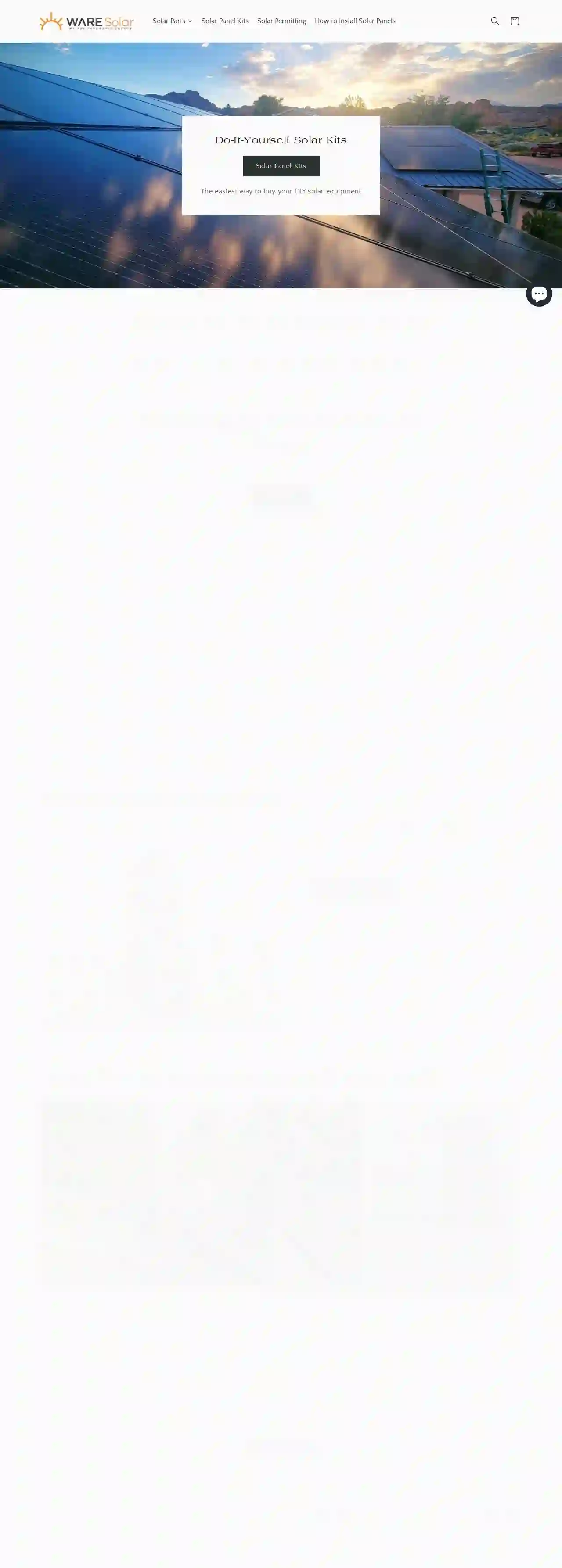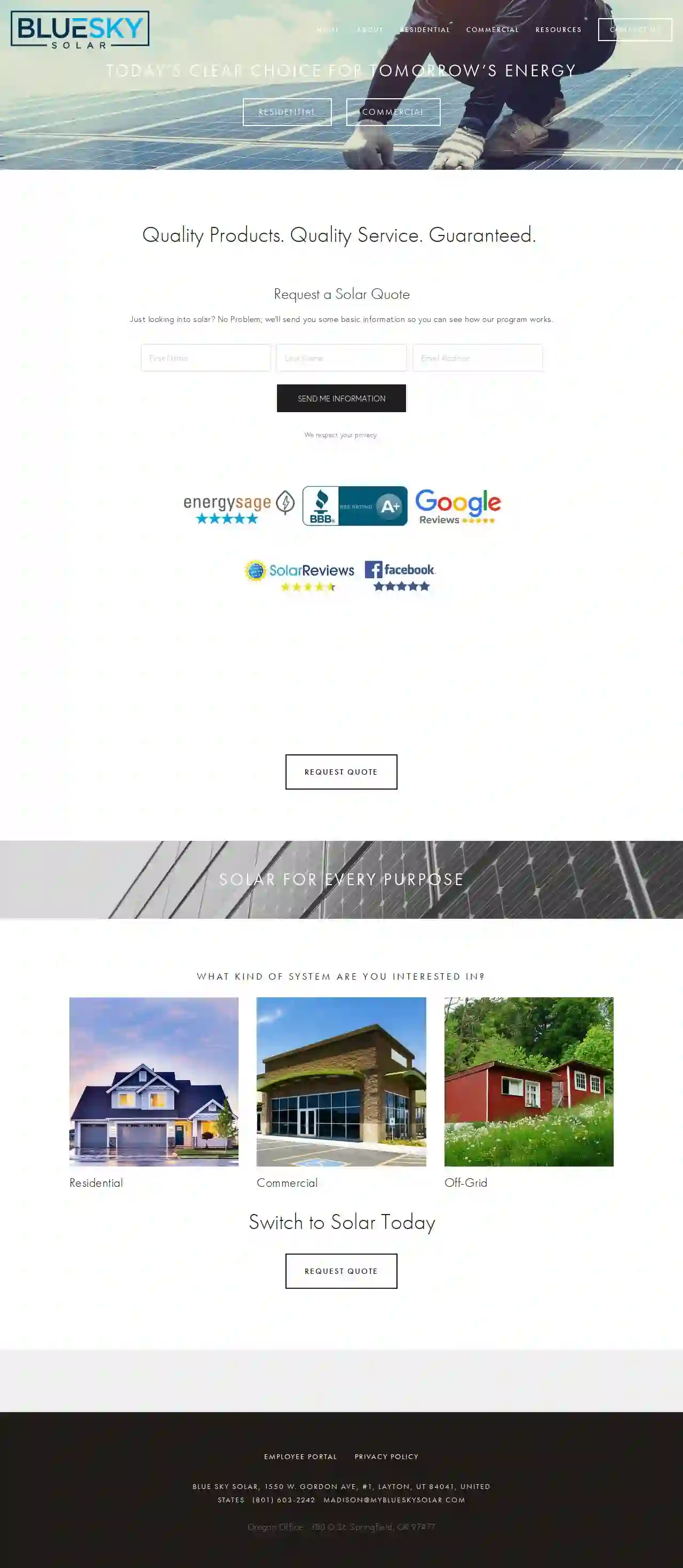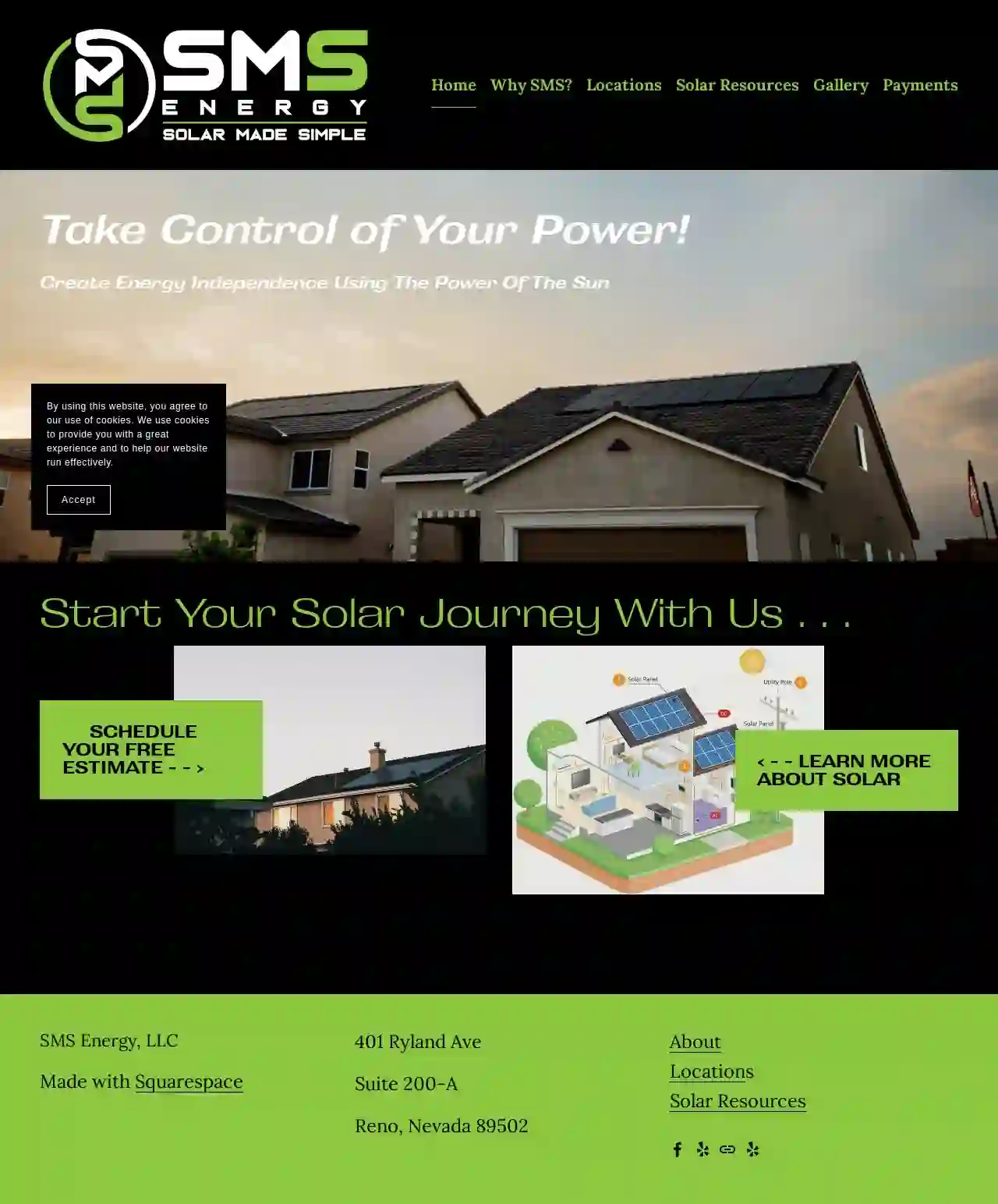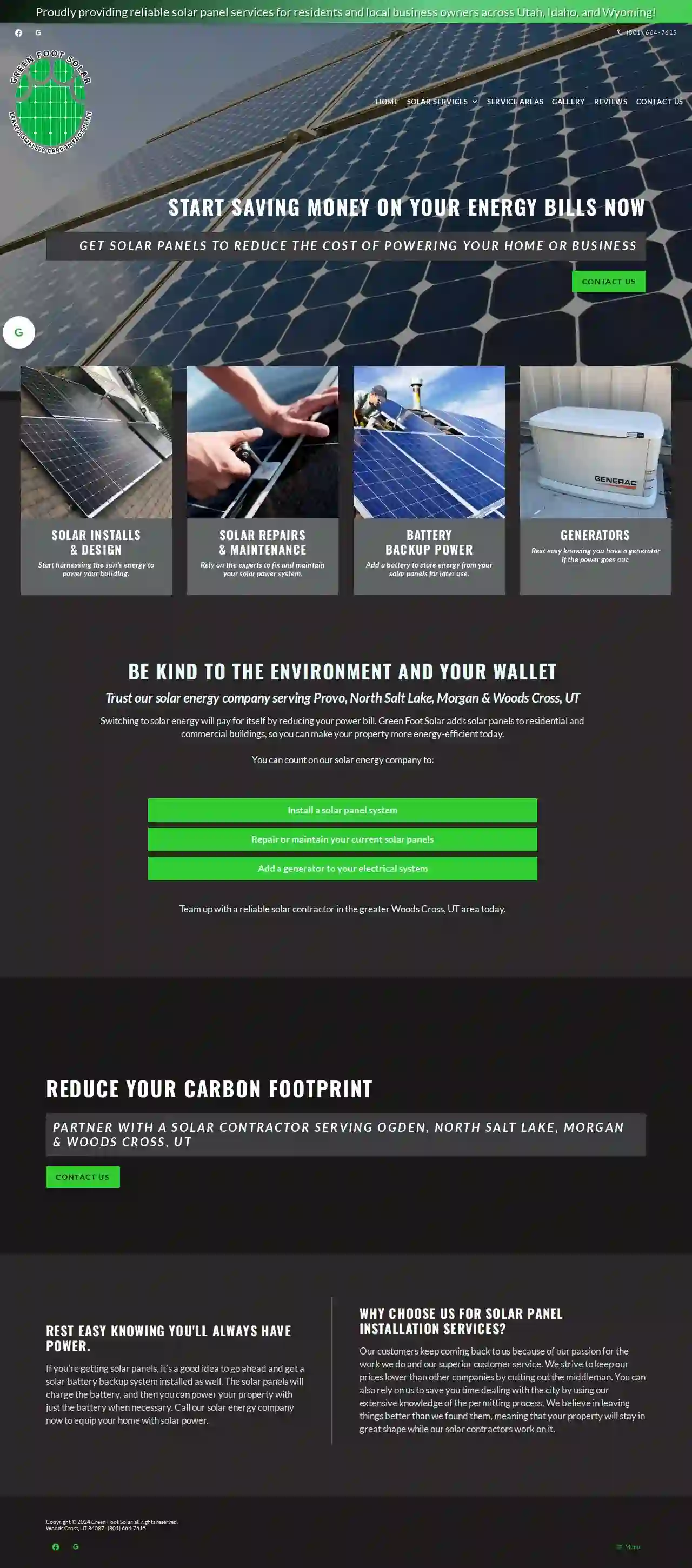Solar Installers Hurricane
Top 10 Solar Installation Company in Hurricane
Get 3 FREE Solar Installers Near Me quotes for your project today! Compare profiles, reviews, accreditations, portfolio, etc... and choose the best deal.

WARE Solar
123 Solar Street, Suite 100, Salt Lake City, 84101, USAt WARE Solar, we are dedicated to teaching, learning, and helping others safely and affordably add renewable energy generation devices to their homes and businesses.
- Services
- Why Us?
- Accreditations
- Our Team
- Testimonials
- Gallery
Get Quote
FLEX PWR
4.128 reviews123 Solar Way, Suite 100, Salt Lake City, 84101, USWe’ve already helped thousands of local families and businesses make the transition to clean energy. Once you understand all the reasons why solar is the smarter choice, Flex Power will be here for you. Flex Power works with the nations #1 install partners to make sure homeowners get the best fit for their home. Our mission is to make homeowners’ lives better by reducing their energy bills, by increasing their reliance on clean and abundant renewable energy, and by providing a world-class customer experience through a reliable sales process and a speedy, high-quality installation.
- Services
- Why Us?
- Accreditations
- Our Team
- Testimonials
- Gallery
Get Quote
Blue Sky Solar, LLC
4.927 reviews1550 W. Gordon Ave, #1, Layton, 84041, USBlue Sky Solar is a leading provider of solar energy solutions, offering a range of services including residential and commercial solar installations, solar financing, and products and warranties. With a focus on staying current with technology and embracing a wider view of renewable energy, Blue Sky Solar sets itself apart from other companies in the industry. The company has built relationships with top manufacturers, allowing them to offer quality products and competitive pricing. Local installation teams ensure that clients receive the best care possible for their renewable energy needs.
- Services
- Why Us?
- Accreditations
- Our Team
- Testimonials
- Gallery
Get Quote
Project Solar
4.3259 reviewsN/A, USProject Solar aims to make solar energy affordable and easy for all homeowners. They offer transparent and instant pricing, with options for full-service installation, DIY installation, and lease-to-own (PPA) agreements. Their services include state-of-the-art AI quoting engine, premium equipment, and a 25-year production warranty.
- Services
- Why Us?
- Accreditations
- Our Team
- Testimonials
- Gallery
Get Quote
SMS Energy, LLC
58 reviewsSuite 200-A, Reno, Nevada, 401 Ryland Ave, 89502, USSMS Energy is a solar energy company founded by industry veterans who aim to provide better customer experiences. They offer solar solutions to help customers achieve energy independence and save money on their utility bills. The company serves various locations including Arkansas, California, Florida, Nevada, and Utah.
- Services
- Why Us?
- Accreditations
- Our Team
- Testimonials
- Gallery
Get Quote
Utah Clean Energy
4.36 reviews215 S. 400 E., Salt Lake City, Utah, 84111, USUtah Clean Energy is a 501(c)(3) nonprofit under EIN: 37-1438788. All donations are tax deductible. The organization is dedicated to leading and accelerating the clean energy transformation with vision and expertise. Their mission includes transitioning to renewable energy, making rooftop solar accessible and affordable, accelerating clean technologies and smart grid, reducing emissions in homes and buildings, going all-electric, achieving zero energy homes and buildings, and advocating for robust energy efficiency incentives. They also focus on climate change leadership, achieving local government's climate goals, and promoting clean and electric transportation.
- Services
- Why Us?
- Accreditations
- Our Team
- Testimonials
- Gallery
Get Quote
Greenify Energy Savers
4.799 reviews123 Main St, Suite 100, Salt Lake City, 84101, USGreenify Energy Savers is an industry leader in providing residential rooftop solar. We can also perform a broad spectrum of services that will make your home more energy efficient, which will save you money and make your home more comfortable.
- Services
- Why Us?
- Accreditations
- Our Team
- Testimonials
- Gallery
Get Quote
green foot solar
Green Foot Solar, Woods Cross, UT, 123 Solar Way, 84087, USGreen Foot Solar is a solar energy company that serves Ogden, North Salt Lake, Provo, and Woods Cross, UT. They specialize in installing solar systems, generators, and battery backup systems at competitive prices. Their team is dedicated to providing quality service and products to customers. They offer solar panel installation, repair, and maintenance services, as well as battery backup power and generator installation.
- Services
- Why Us?
- Accreditations
- Our Team
- Testimonials
- Gallery
Get Quote
SunPower by Custom Energy
528 reviewsLehi, Utah, 123 Solar Way, 84043, USSunPower by Custom Energy is a leading solar company in Utah, providing eco-friendly renewable energy solutions to homeowners. With superior solar technology, including the all-in-one SunPower Equinox and SunVault Storage system, homeowners can generate and store power with ease. SunPower by Custom Energy is committed to empowering local communities with access to clean energy and offers solar panel installation services that are more affordable and efficient than ever before.
- Services
- Why Us?
- Accreditations
- Our Team
- Testimonials
- Gallery
Get Quote
Sunridge Solar
4.646 reviewsN/A, USSunRidge Solar is a Utah-based company that specializes in providing solar solutions to homeowners and businesses. They offer a range of services including solar power, battery backup, and PowerGrid systems. Their mission is to help customers achieve energy independence and save money on their power bills. SunRidge Solar has been in the industry for over 30 years and has extensive experience in general contract work for thousands of Utah homeowners and businesses.
- Services
- Why Us?
- Accreditations
- Our Team
- Testimonials
- Gallery
Get Quote
Over 4,210+ Solar Installers on our directory
Our solar companies operate in Hurricane and beyond!
SolarCompaniesHub has curated and vetted the Best Solar Installers arround Hurricane. Find a trustworthy pro today.
Frequently Asked Questions About Solar Installers
- Contact SolarCompaniesHub: We make it simple to connect with reputable Solar Installers in your area.
- Get Free Quotes: Request free quotes from multiple installers to compare prices, systems, and warranties.
- Schedule a Site Assessment: A qualified installer will visit your property to assess your roof, energy needs, and discuss your goals.
- Review Your Proposal and Contract: Carefully review the proposed system, financing options, and warranties before signing a contract.
- Installation and Activation: Once the contract is signed, the installer will obtain necessary permits, schedule the installation, and activate your solar system.
- String Inverters: Connect multiple panels in a series (a 'string'). A cost-effective option for simple systems, but a single panel issue can affect the entire string.
- Microinverters: Attach to each individual solar panel, maximizing energy production even if some panels are shaded. They are more expensive but offer greater efficiency and monitoring capabilities.
- Power Optimizers: Similar to microinverters, but less expensive. They optimize the output of each panel and provide individual panel monitoring, but a central inverter is still required.
- Hybrid Inverters: Combine a solar inverter with a battery charge controller, allowing for seamless integration of battery storage.
How do I get started with solar panel installation?
What are the different types of solar inverters?
What happens if my roof needs to be replaced after I install solar panels?
Do I need planning permission to install solar panels in USA?
How do I get started with solar panel installation?
- Contact SolarCompaniesHub: We make it simple to connect with reputable Solar Installers in your area.
- Get Free Quotes: Request free quotes from multiple installers to compare prices, systems, and warranties.
- Schedule a Site Assessment: A qualified installer will visit your property to assess your roof, energy needs, and discuss your goals.
- Review Your Proposal and Contract: Carefully review the proposed system, financing options, and warranties before signing a contract.
- Installation and Activation: Once the contract is signed, the installer will obtain necessary permits, schedule the installation, and activate your solar system.
What are the different types of solar inverters?
- String Inverters: Connect multiple panels in a series (a 'string'). A cost-effective option for simple systems, but a single panel issue can affect the entire string.
- Microinverters: Attach to each individual solar panel, maximizing energy production even if some panels are shaded. They are more expensive but offer greater efficiency and monitoring capabilities.
- Power Optimizers: Similar to microinverters, but less expensive. They optimize the output of each panel and provide individual panel monitoring, but a central inverter is still required.
- Hybrid Inverters: Combine a solar inverter with a battery charge controller, allowing for seamless integration of battery storage.